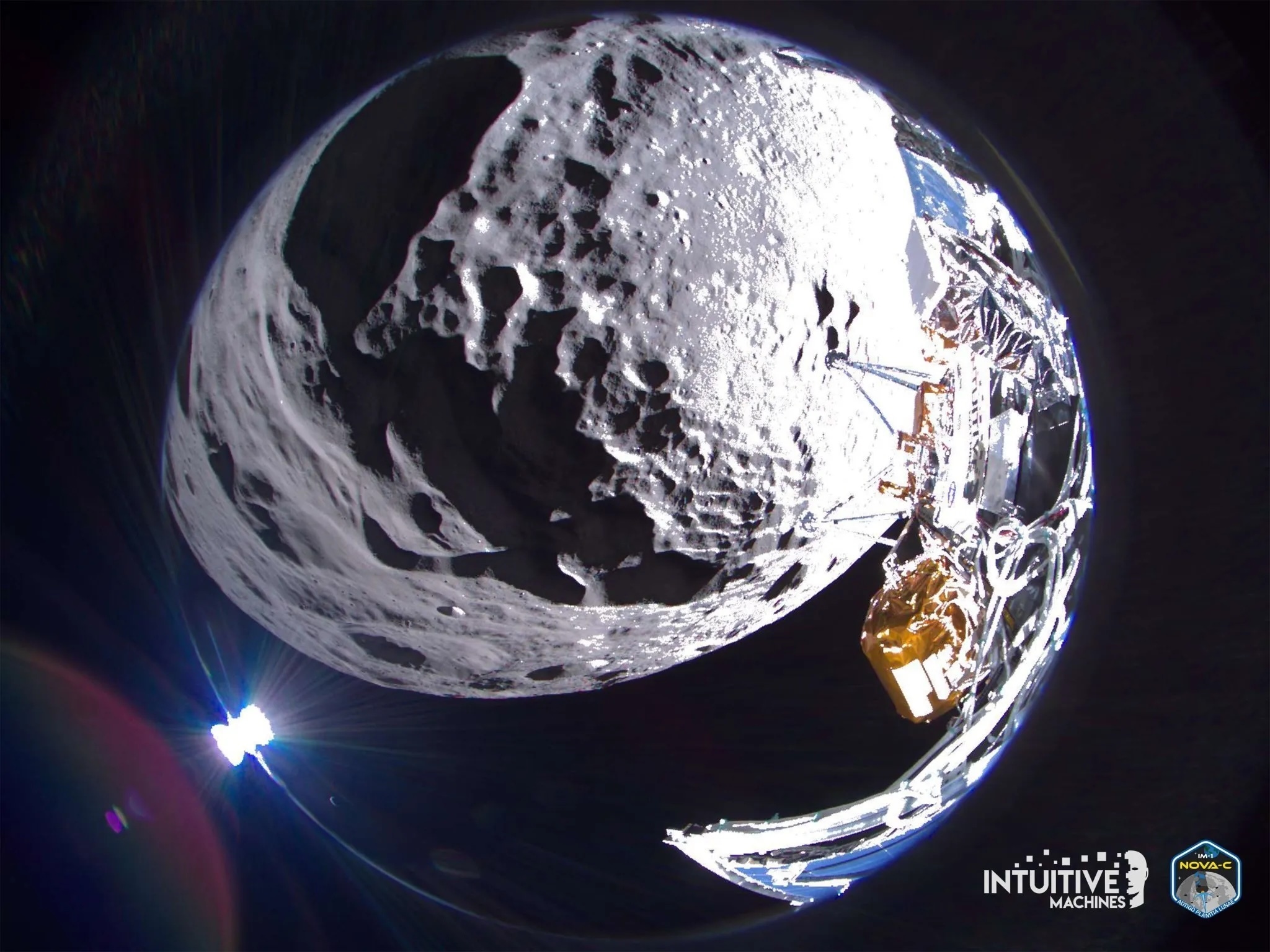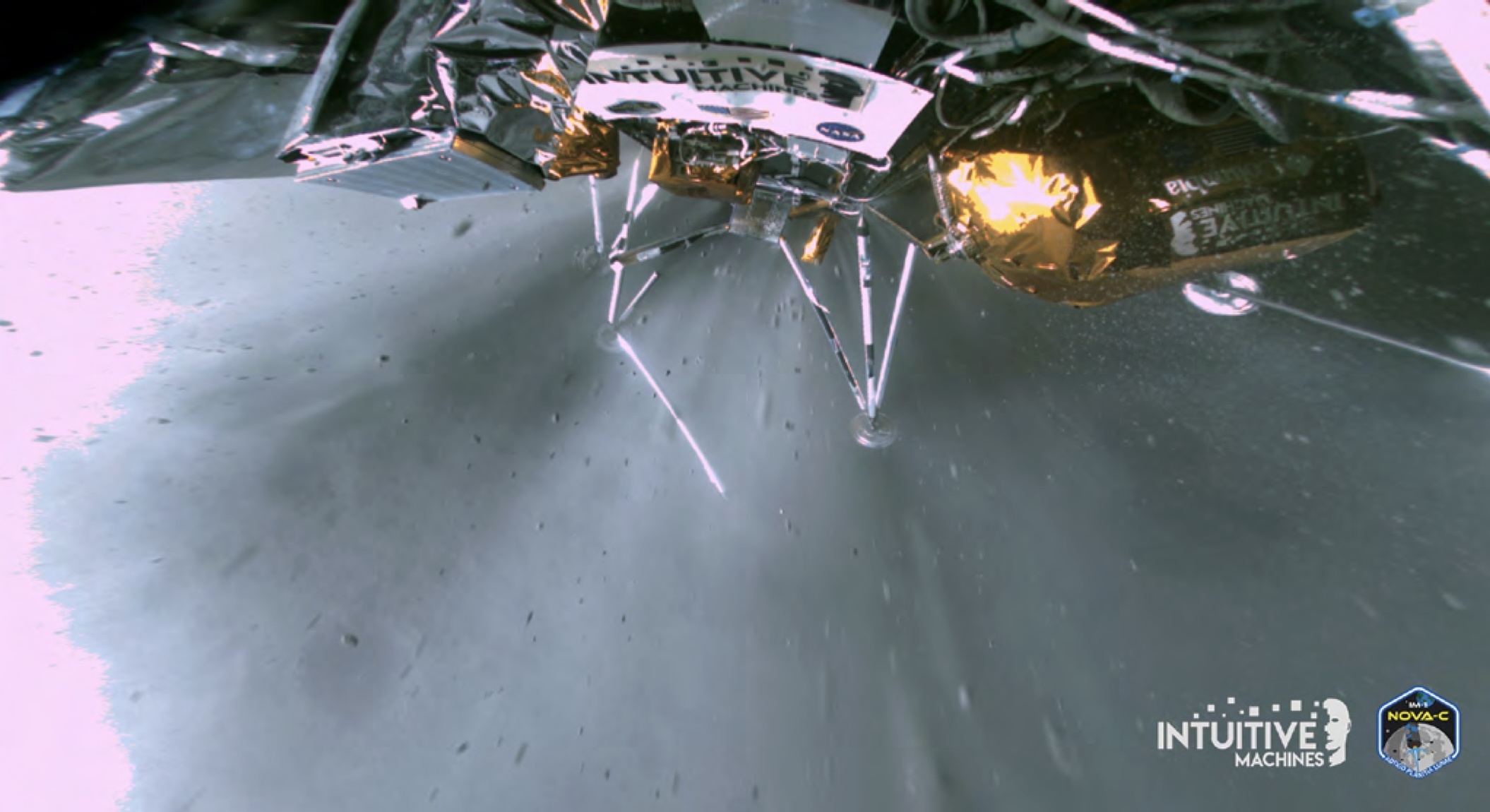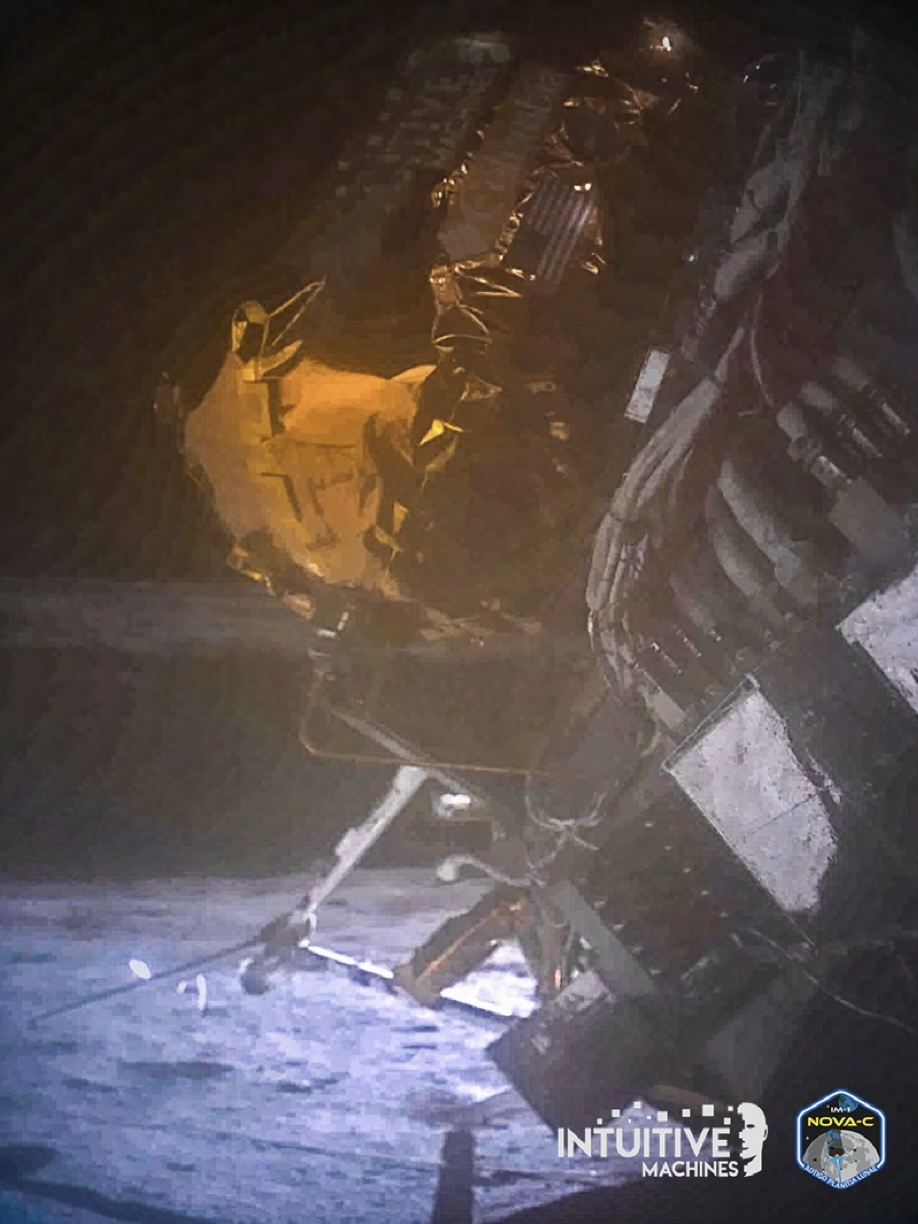25.02.2024
NASA Tech Contributes to Soft Moon Landing, Agency Science Underway
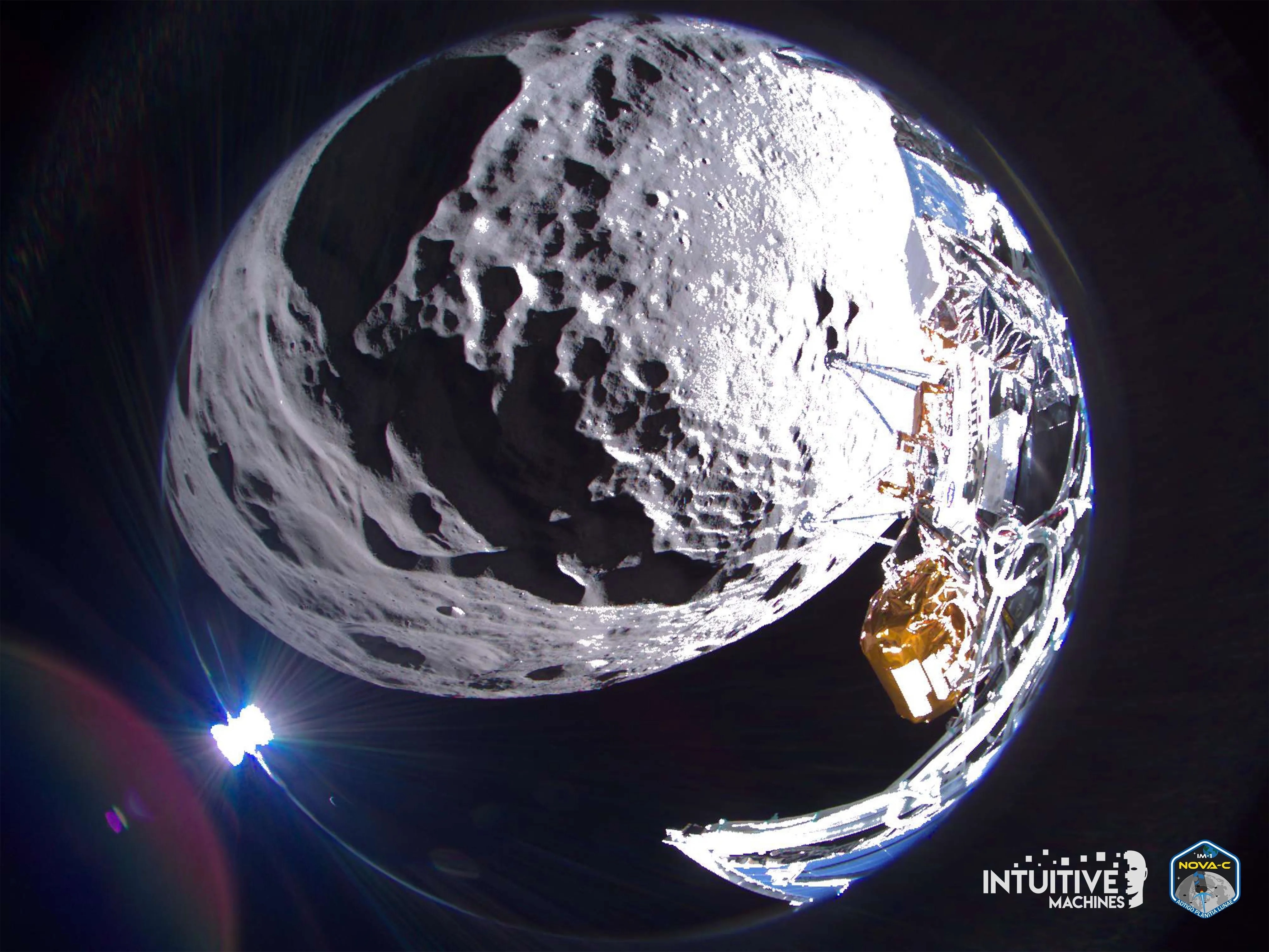
Editor’s note: This release was updated Feb. 23, 2024, to add an image from the news conference and participant titles.
For the first time in more than 50 years, new NASA science instruments and technology demonstrations are operating on the Moon following the first successful delivery of the agency’s CLPS (Commercial Lunar Payload Services) initiative.
Intuitive Machines’ Nova-C lander, called Odysseus, completed a seven-day journey to lunar orbit and executed procedures to softly land near Malapert A in the South Pole region of the Moon at 5:24 p.m. CST on Feb. 22. The lander is healthy, collecting solar power, and transmitting data back to the company’s mission control in Houston. The mission marks the first commercial uncrewed landing on the Moon.
Carrying six NASA science research and technology demonstrations, among other customer payloads, all NASA science instruments completed transit checkouts en route to the Moon. A NASA precision landing technology demonstration also provided critical last-minute assistance to ensure a soft landing. As part of NASA’s Artemis campaign, the lunar delivery is in the region where NASA will send astronauts to search for water and other lunar resources later this decade.
“For the first time in more than half a century, America returned to the Moon. Congratulations to Intuitive Machines for placing the lunar lander Odysseus carrying NASA scientific instruments to a place no person or machine has gone before, the lunar South Pole,” said NASA Administrator Bill Nelson. “This feat from Intuitive Machines, SpaceX, and NASA demonstrates the promise of American leadership in space and the power of commercial partnerships under NASA’s CLPS initiative. Further, this success opens the door for new voyages under Artemis to send astronauts to the Moon, then onward to Mars.”
During the journey to the Moon, NASA instruments measured the quantity of cryogenic engine fuel as it has been used, and while descending toward the lunar surface, teams collected data on plume-surface interactions and tested precision landing technologies.
Odysseus’ surface operations are underway and expected to take place through Thursday, Feb. 29.
New lunar science, technology
NASA’s Navigation Doppler Lidar for Precise Velocity and Range Sensing (NDL) guidance system for descent and landing ultimately played a key role in aiding the successful landing. A few hours ahead of landing, Intuitive Machines encountered a sensor issue with their navigation system and leaned on NASA’s guidance system for an assist to precisely land. NASA’s instrument operates on the same principles of radar and uses pulses from a laser emitted through three optical telescopes. It measures speed, direction, and altitude with high precision during descent and touchdown.
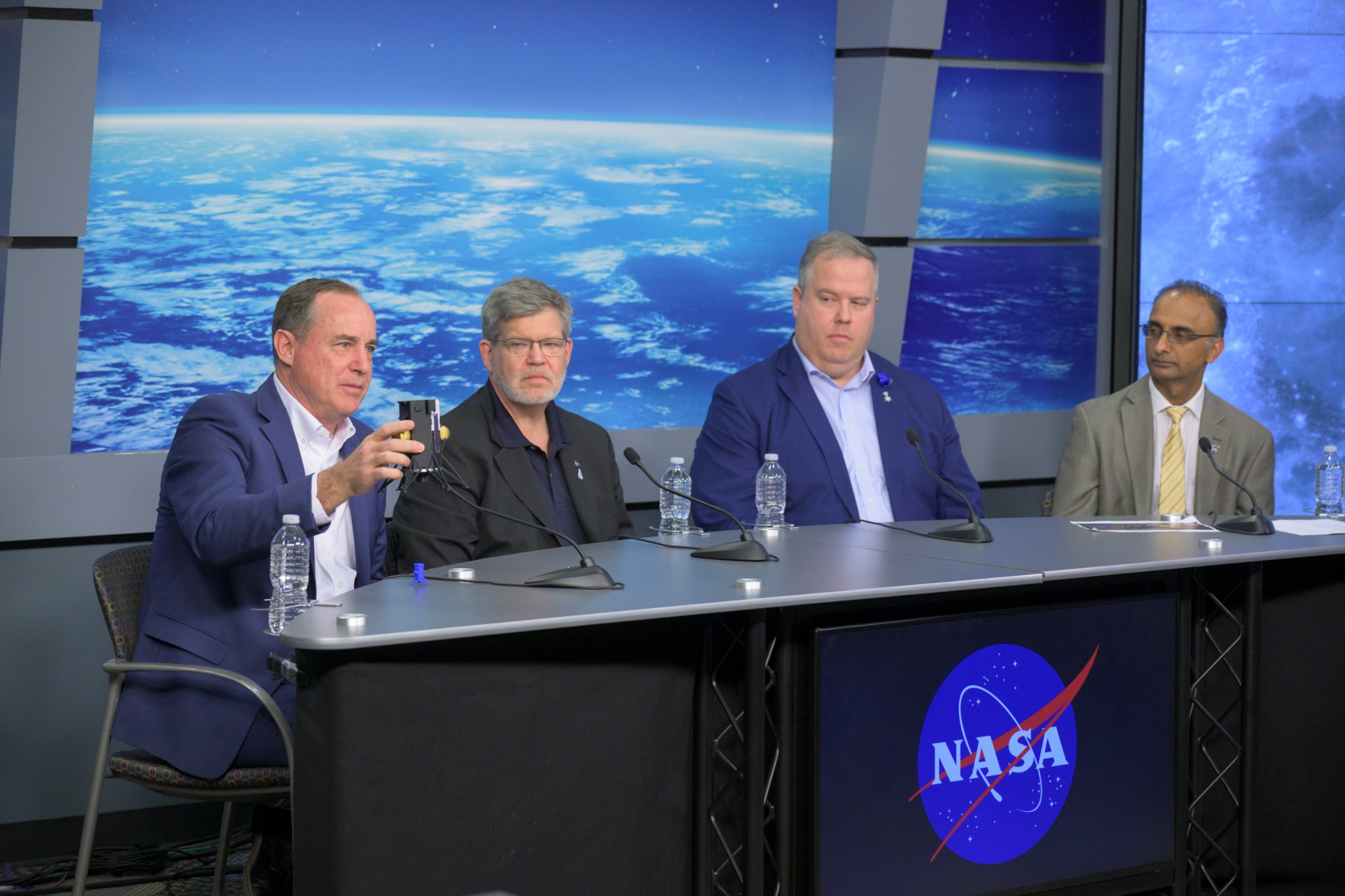
Now that they are on the lunar surface, NASA instruments will focus on investigating lunar surface interactions and radio astronomy. The Odysseus lander also carries a retroreflector array that will contribute to a network of location markers on the Moon for communication and navigation for future autonomous navigation technologies.
Additional NASA hardware aboard the lander includes:
- Lunar Node 1 Navigation Demonstrator: A small, CubeSat-sized experiment that will demonstrate autonomous navigation that could be used by future landers, surface infrastructure, and astronauts, digitally confirming their positions on the Moon relative to other spacecraft, ground stations, or rovers on the move.
- Laser Retroreflector Array: A collection of eight retroreflectors that enable precision laser ranging, which is a measurement of the distance between the orbiting or landing spacecraft to the reflector on the lander. The array is a passive optical instrument and will function as a permanent location marker on the Moon for decades to come.
- Radio Frequency Mass Gauge: A technology demonstration that measures the amount of propellant in spacecraft tanks in a low-gravity space environment. Using sensor technology, the gauge will measure the amount of cryogenic propellant in Nova-C’s fuel and oxidizer tanks, providing data that could help predict fuel usage on future missions.
- Radio-wave Observations at the Lunar Surface of the Photoelectron Sheath: The instrument will observe the Moon’s surface environment in radio frequencies, to determine how natural and human-generated activity near the surface interacts with and could interfere with science conducted there.
- Stereo Cameras for Lunar Plume-Surface Studies: A suite of four tiny cameras to capture imagery showing how the Moon’s surface changes from interactions with the spacecraft’s engine plume during and after descent.
NASA is committed to supporting its U.S. commercial vendors as they navigate the challenges of sending science and technology to the surface of the Moon.
“In daring to confront one of humanity’s greatest challenges, Intuitive Machines created an entire lunar program that has ventured farther than any American mission to land on the Moon in over 50 years,” said Steve Altemus, CEO of Intuitive Machines. “This humbling moment reminds us that pursuing the extraordinary requires both boldness and resilience.”
Quelle: NASA
+++
IM-1 lunar lander tipped over on its side
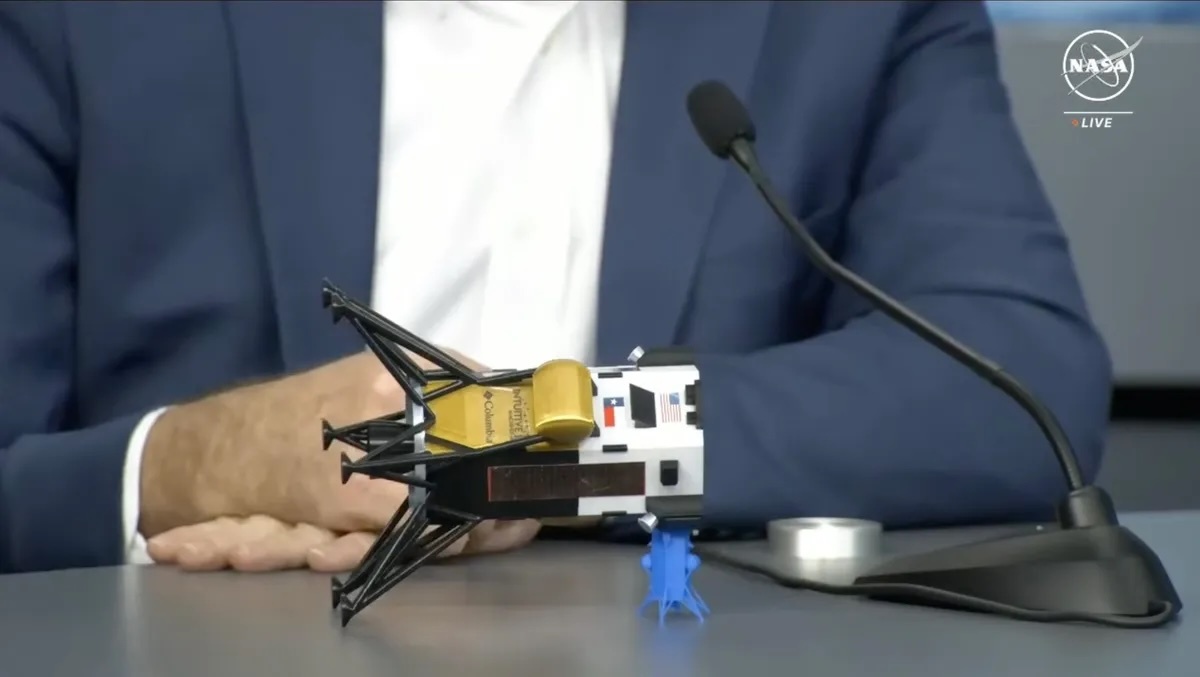
Steve Altemus, CEO of Intuitive Machines, uses a model of the company's Nova-C lander to show its likely orientation after landing Feb. 22. Credit: NASA TV
WASHINGTON — The Intuitive Machines Nova-C lunar lander likely tipped over when touching down on the moon Feb. 22 and is now resting on its side.
In a televised media teleconference Feb. 23, nearly 24 hours after the IM-1 mission landed on the moon, company officials said they believed the lander, 4.3 meters tall and 1.6 meters in diameter, is resting on its side a few kilometers from its intended landing site near the Malapert A crater in the south polar regions of the moon.
The lander “caught a foot in the surface, and the lander has tipped,” said Steve Altemus, chief executive of Intuitive Machines, illustrating the status of the lander with a small model of it.
He suggested that was caused by the lander coming down faster than expected. The lander’s final descent was supposed to be straight down at about one meter per second, but was instead descending at about three times that velocity with about one meter per second of lateral motion.
“If you catch a foot, we might have fractured that landing gear and tipped over gently,” he said. The lander appears to be resting on a rock, elevating it slightly above the surface, based on the power it is generating; he said the foot could also be in a crevice.
Intuitive Machines had reported a couple hours after the landing that the lander was upright. However, Altemus said that determination was based on “stale telemetry” from fuel tanks on the lander.
The lander has yet to return images as controllers work to reconfigure radios on the spacecraft. Tim Crain, chief technology officer of Intuitive Machines, said they are still determining what data rates they can get with the lander on its side and some antennas thus not usable. “We expect to get most of the mission data down once we stabilize our configuration,” he said.
Fortunately, the only payload mounted on the side of the lander now facing the surface is a static payload: an artwork provided by artist Jeff Koons. Other commercial and NASA payloads are operating, and many of them collected data during the flight to the moon and during the descent to the surface.
One of those NASA payloads may have saved the mission. Engineers were able to use data from the Navigation Doppler Lidar instrument developed at NASA’s Langley Research Center to replace laser rangefinders on the lander that were not working.
Controllers discovered the problem with the lander’s laser rangefinders after going into orbit around the moon Feb. 21 and deciding to use them to more precisely measure the lander’s orbit, which was more elliptical than intended. The lasers, though, did not work, and engineers determined that a physical switch — a safety measure on the ground because the lasers are not eye-safe — was not flipped before launch.
“It was like a punch in the stomach. We were going to lose the mission,” Altemus recalled. Crain then found it would be possible to take the data from two lasers in the NASA instrument and incorporate them into the lander’s navigation system.
“In normal software development for a spacecraft, this is the kind of thing that would have taken a month,” Crain said. “Our team basically did that in an hour and a half.”
That process also provided a greater validation of the NASA payload than originally expected. “The technology performed flawlessly,” said Prasun Desai, NASA deputy associate administrator for space technology. “It acquired range and velocity data well above the required five-kilometer altitude as it was descending.”
He noted the goal of flying the payload was to achieve a technology readiness level (TRL) of 6 on a 1-to-9 scale, validating a prototype of the technology in a relevant environment. With its use on the landing, “we were able to get an operational system now, TRL 9. It’s ready to be used from now on.”
Altemus added it was “fortuitous” that Nova-C was in an elliptical orbit that prompted engineers to activate the laser rangefinder earlier than expected and thus discovered the problem. “That was fortunate and a bit of luck for us.”
In normal operations, Crain said, the laser rangefinders would not have been activated until after the lander began its powered descent to the surface. “We would have probably been five minutes to landing before we realized those lasers weren’t working,” he said.
One payload yet to operate is EagleCam, a student-built camera that was designed to eject from the lander about 30 meters from the surface and take images of the landing. However, the ejection did not take place after the software on the lander was revised to make use of the Navigation Doppler Lidar data. Altemus said EagleCam is mounted on a side panel and should be able to eject later in the mission, which may last 9 to 10 days on the surface, providing images of the lander.
Crain said the lander is likely within two to three kilometers of the planned landing site, based on the performance of optical navigation sensors on the lander. NASA’s Lunar Reconnaissance Orbiter is scheduled to pass over the landing area in the next few days and will take images in an effort to pinpoint the landing location.
Despite the lander being on its side, both the company and NASA played up the milestones of the mission. That included being the first commercial spacecraft to land softly on the moon, the first American spacecraft to do so since Apollo 17 in December 1972 and the mission to land the closest yet to the lunar south pole, at a latitude of about 80 degrees south.
The landing was a validation of NASA’s approach, through its Commercial Lunar Payload Services program, of having companies design, build and operate lunar lander missions, argued Joel Kearns, deputy associate administrator for exploration in NASA’s Science Mission Directorate. “This is a gigantic accomplishment.”
Quelle: SN
----
Update: 27.02.2024
.
HOUSTON, TX – February 26, 2024
Odysseus continues to communicate with flight controllers in Nova Control from the lunar surface. After understanding the end-to-end communication requirements, Odysseus sent images from the lunar surface of its vertical descent to its Malapert A landing site, representing the furthest south any vehicle has been able to land on the Moon and establish communication with ground controllers.
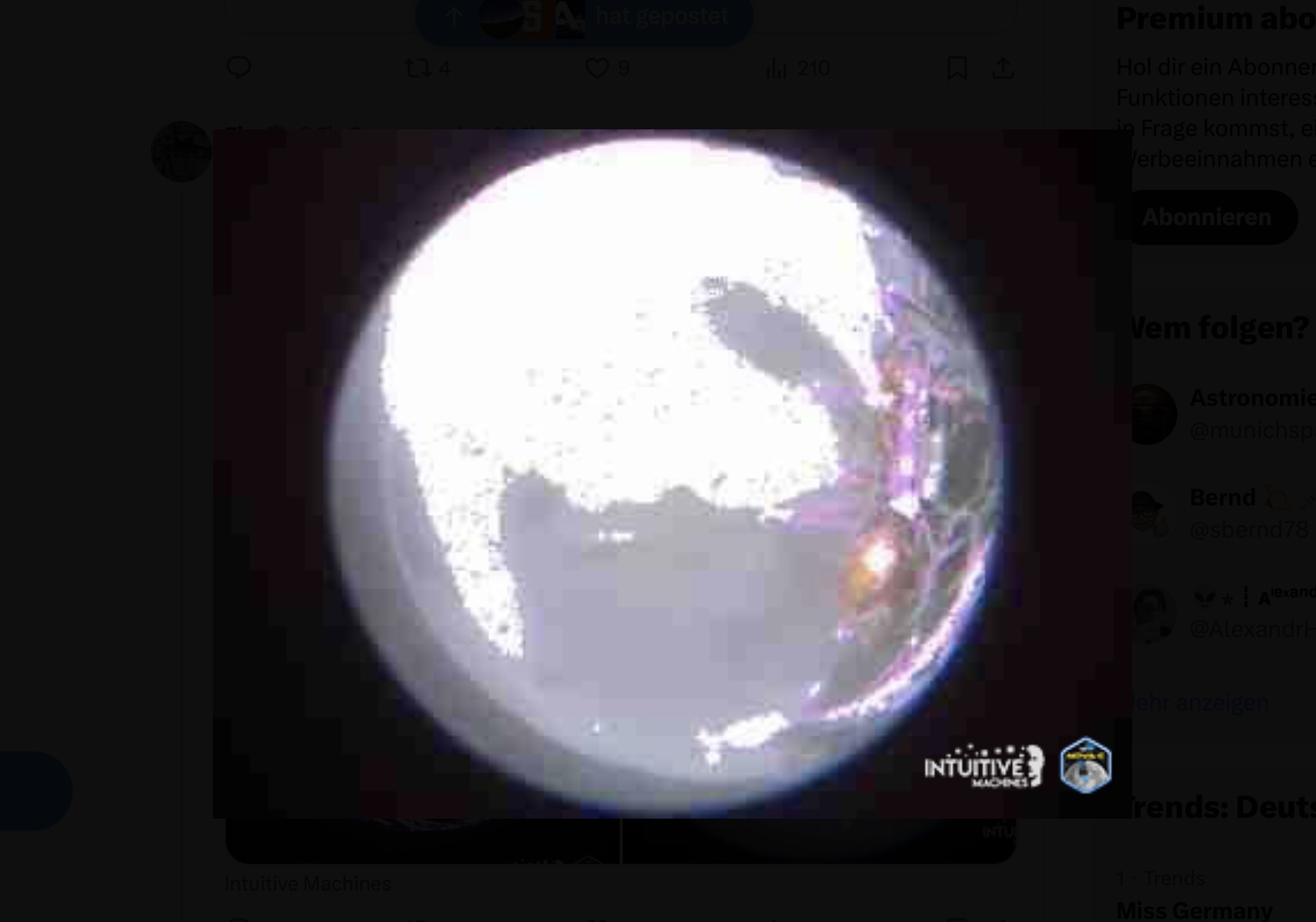
As part of Odysseus’ descent onto the lunar surface, Intuitive Machines Hazard Relative Navigation algorithms detected nine safe landing sites within the targeted south pole region, which is an area that contains permanently shadowed regions that may be rich in resources, including water ice that could be used for future propulsion and life support on the Moon.
Images from NASA’s Lunar Reconnaissance Orbiter Camera team confirmed Odysseus completed its landing at 80.13°S and 1.44°E at a 2579 m elevation. After traveling more than 600,000 miles, Odysseus landed within 1.5 km of its intended Malapert A landing site, using a contingent laser range-finding system patched hours before landing.
Flight controllers intend to collect data until the lander’s solar panels are no longer exposed to light. Based on Earth and Moon positioning, we believe flight controllers will continue to communicate with Odysseus until Tuesday morning.
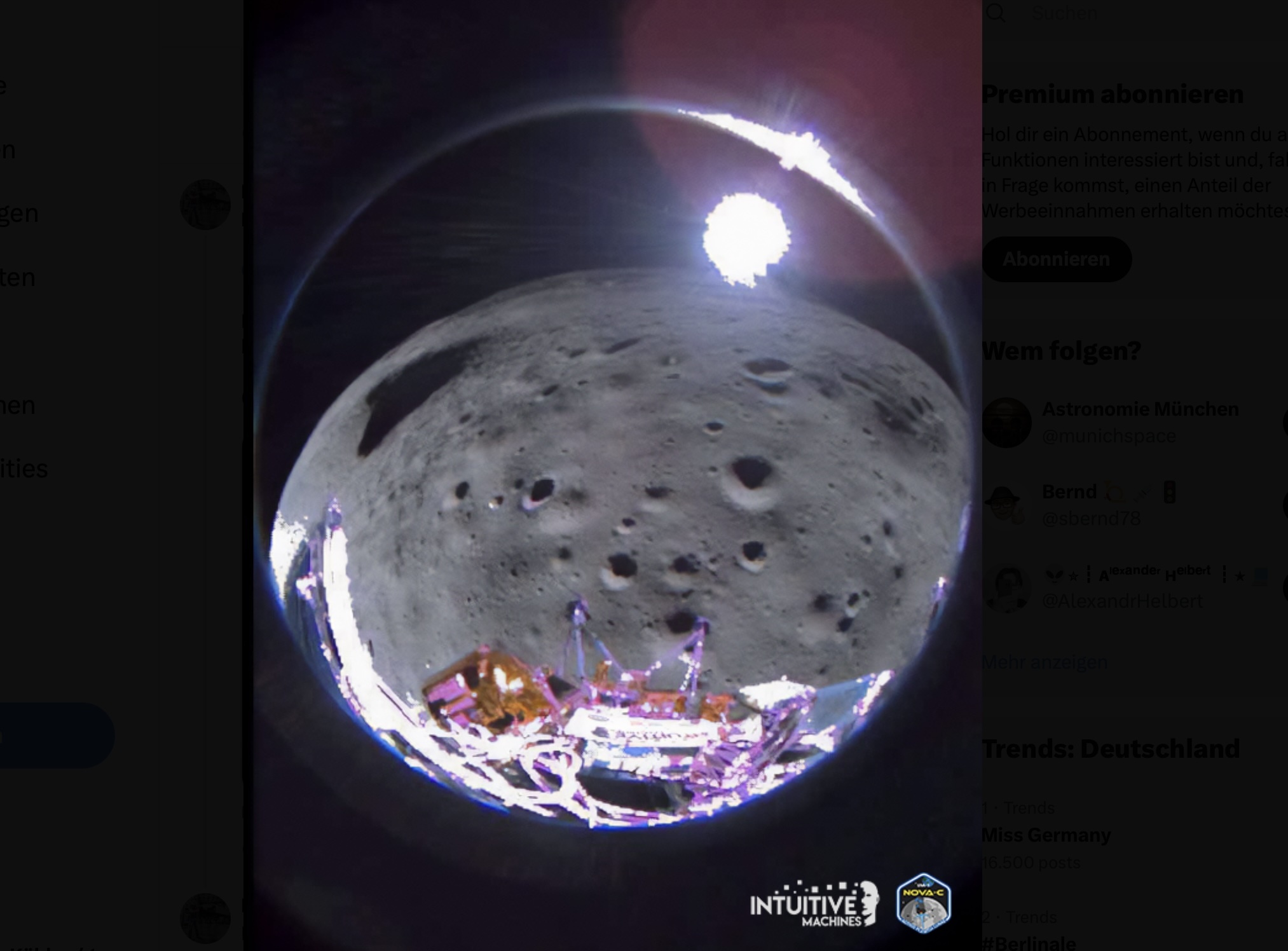
Odysseus captured this image approximately 35 seconds after pitching over during its approach to the landing site. The camera is on the starboard aft-side of the lander in this
phase.
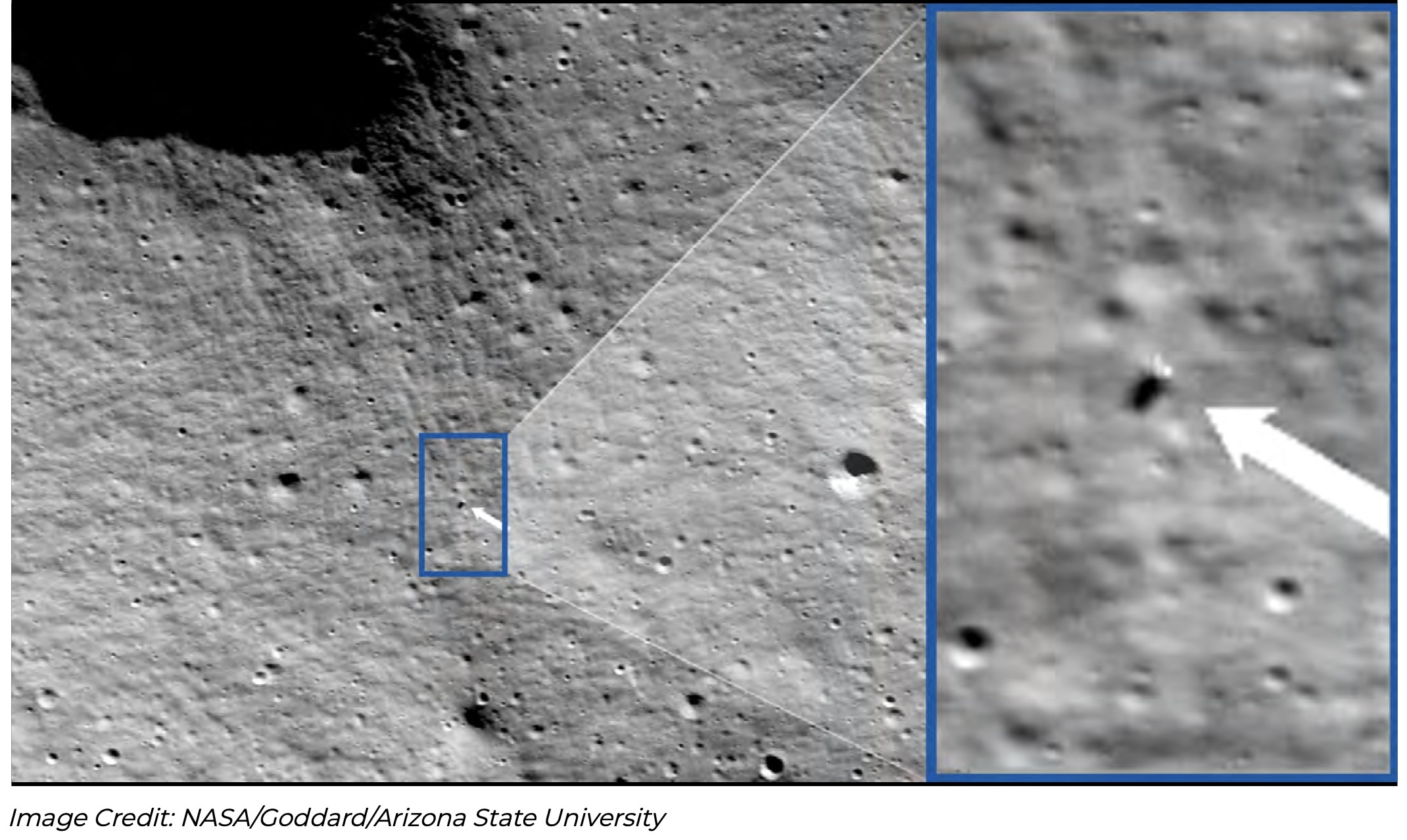
Quelle: intuitivemachines
+++
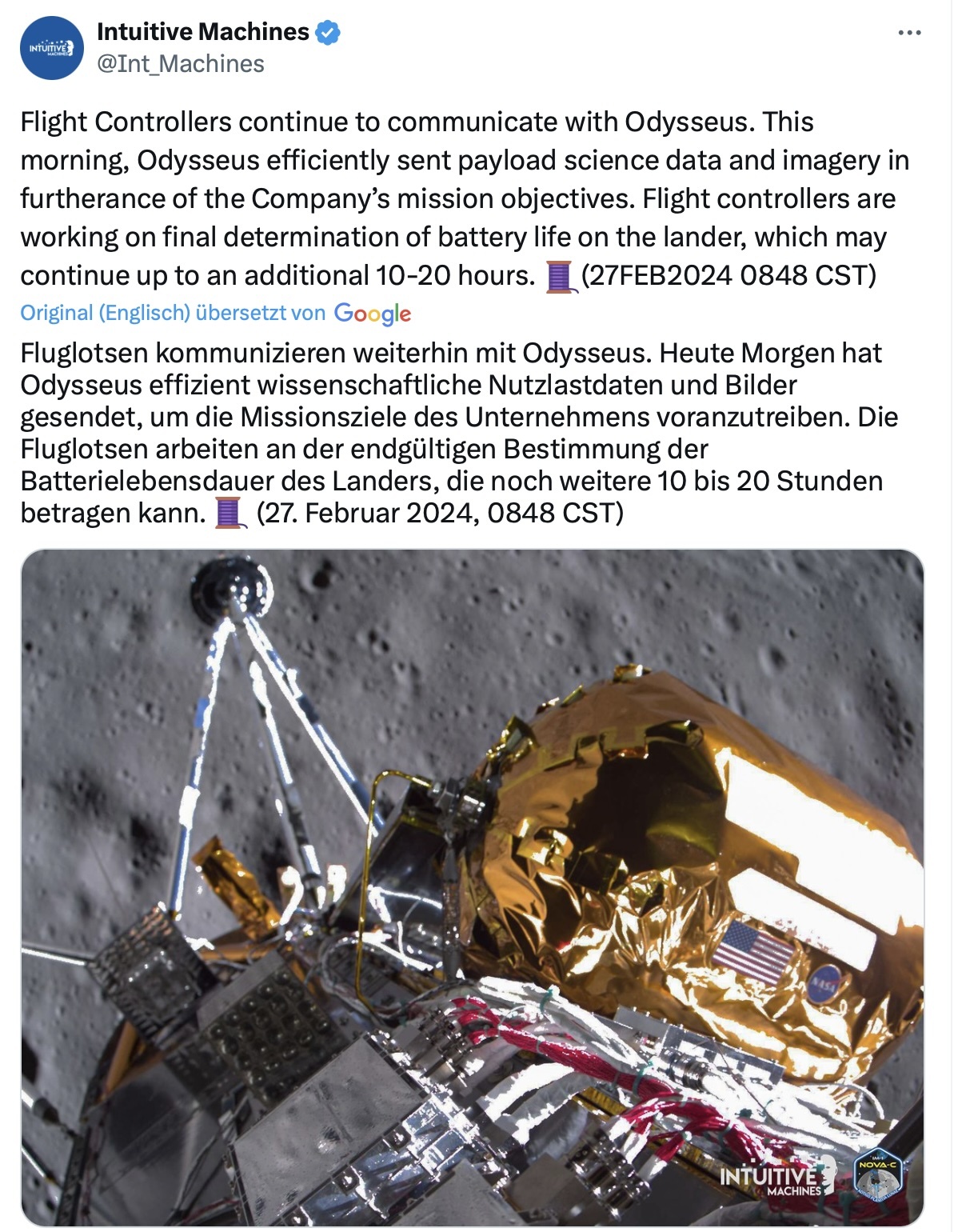
Quelle: X Twitter
+++
MENSCHLICHES VERSAGEN
Schalter vergessen: US-Mondmission droht ein Flop
Das kommerzielle US-Mondlandegerät „Odysseus“ sollte die Rückkehr der USA zum Erdtrabanten einläuten - nun könnte die Mission aber deutlich rascher zu Ende gehen als geplant. Der Grund ist offenbar menschliches Versagen.
„Odysseus“ sollte eigentlich sieben Tage lang Daten Richtung Erde senden - jedoch läuft die Mission definitiv nicht nach Plan. Grund dafür: Bei der Landung hat offenbar ein Laser-Entfernungsgerät nicht funktioniert, wodurch der Lander schneller als geplant abstieg, sich verfing und auf die Seite kippte.
Lander geht der Strom aus
Dadurch sind nicht alle Antennen zur Übertragung nutzbar - und die Solarpaneele befinden sich nicht mehr im Sonnenlicht. Wie das US-Unternehmen Intuitive Machines erklärte, werde man voraussichtlich nur noch bis Dienstagvormittag (Ortszeit Houston, Texas) mit dem Lander kommunizieren können.
Wichtiger Schalter kann nur per Hand bedient werden
Wie nun bekannt wurde, war der Grund für die Bruchlandung äußerst banal. Nicht die Technik hat das Fluggerät im Stich gelassen, sondern menschliches Versagen. Noch vor dem Start haben Konstrukteure das hochmoderne Laser-Navigationssystem mittels Schalter deaktiviert, damit die Laser während der Arbeiten keine Gefahr für die Augen darstellen. Dummerweise wurde offenbar vergessen, den Schalter vor dem Start umzulegen - das kann jedoch nur per Hand erfolgen.
Dass der Lander es überhaupt halbwegs unbeschadet auf die Mondoberfläche geschafft hat, ist dabei einem experimentellen Navigationssystem der NASA zu verdanken. Noch während sich „Odysseus“ im Landeanflug befand, wurde es aktiviert und brachte den Lander zwar unsanft, aber doch zu Boden.
Mission nicht gänzlich umsonst
Ganz umsonst war die Mission aber freilich nicht. Erst am Montag veröffentlichte das Unternehmen das erste Foto in geringer Auflösung, das „Odysseus“ nach der Landung gemacht hat. Der Lander habe zudem Aufnahmen von seinem Abstieg bis zum Malapert-A-Krater übertragen, so Intuitive Machines auf X.

